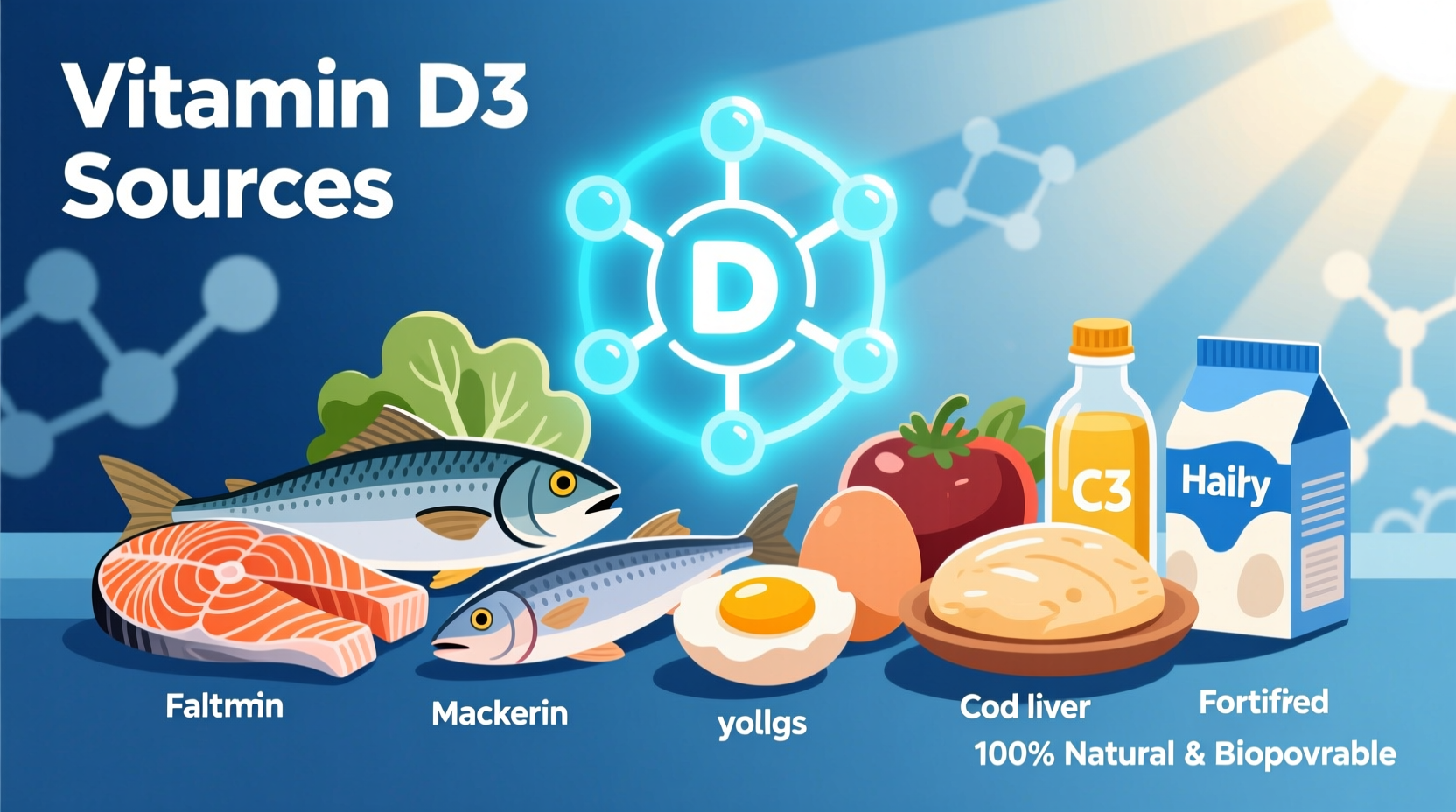The top natural food sources of vitamin D3 are fatty fish like salmon and mackerel, egg yolks from pasture-raised chickens, beef liver, and UV-exposed mushrooms. A 3-ounce serving of cooked salmon provides 570 IU (71% of daily value), while one large egg yolk delivers 37 IU. Fortified foods including milk, plant-based alternatives, and cereals also contribute significantly to daily intake.
Why Vitamin D3 Matters for Your Health
Vitamin D3 (cholecalciferol) is the biologically active form your body uses most efficiently for calcium absorption, bone strength, and immune function. Unlike vitamin D2 from plants, D3 maintains blood levels 87% longer according to NIH research. Most adults need 600-800 IU daily, but few realize only animal-based foods naturally contain D3—making strategic dietary choices essential.
Your Actionable Vitamin D3 Food Guide
Understanding which foods deliver meaningful D3 quantities helps you build effective meal plans. We've organized sources by practical impact:
Fatty Fish: The Powerhouse Providers
Wild-caught fatty fish dominate natural D3 sources. Notice the significant difference between wild and farmed varieties:
| Food (3-oz serving) | Vitamin D3 (IU) | % Daily Value |
|---|---|---|
| Wild-caught salmon | 570 | 71% |
| Farmed salmon | 250 | 31% |
| Mackerel | 360 | 45% |
| Sardines (canned) | 231 | 29% |
Source: USDA FoodData Central. Wild fish accumulate more D3 from natural plankton diets. Aim for two 3-oz servings weekly to cover 140% of your weekly needs.

Eggs: The Accessible Daily Source
One large pasture-raised egg yolk contains 37 IU—double conventional eggs. The difference comes from chickens' sunlight exposure. Incorporate two whole eggs daily for 18% of your D3 needs while gaining protein and choline. Remember: D3 concentrates in yolks, so avoid discarding them.
Fortified Foods: Strategic Supplementation Through Diet
Since natural D3 sources are limited, fortified options bridge critical gaps. Check labels for "vitamin D3" (not D2) as fortification practices vary globally:
- Dairy & Plant Milks: 1 cup typically provides 100-120 IU (USDA standards)
- Breakfast Cereals: 70-100 IU per serving (varies by brand)
- Orange Juice: 100 IU per 8-oz serving (common in US products)
Important context: European regulations restrict milk fortification, making fatty fish even more crucial there. Always verify labels as "vitamin D" alone may indicate less effective D2.
Special Considerations for Dietary Restrictions
Vegans face challenges since natural D3 is animal-derived. UV-exposed mushrooms provide D2 (not D3), requiring higher consumption for equivalent benefits. For vegetarians, fortified plant milks and eggs become primary sources. Those with limited sun exposure—like northern residents in winter—should prioritize fatty fish twice weekly plus fortified foods to prevent deficiency.
Practical Integration Strategies
Maximize your D3 intake with these chef-tested approaches:
- Breakfast Boost: Combine fortified cereal (100 IU) with two pasture-raised eggs (74 IU) for 22% of daily needs
- Lunch Upgrade: Add 3 oz canned sardines (231 IU) to salads
- Dinner Focus: Prepare 3 oz grilled mackerel (360 IU) with roasted UV-exposed mushrooms
Cooking doesn't degrade D3, but prolonged light exposure reduces potency in fortified foods. Store milk and cereals in opaque containers. Remember that consistent moderate intake beats occasional large doses—your body stores D3 for gradual use.
When Diet Isn't Enough: Recognizing Limitations
Natural food sources alone rarely meet requirements for deficient individuals. Blood tests revealing levels below 20 ng/mL typically require supplements. Older adults, darker-skinned individuals, and those with malabsorption conditions often need 1,000-2,000 IU daily from supplements despite optimal diets. Consult your healthcare provider before making significant changes.











 浙公网安备
33010002000092号
浙公网安备
33010002000092号 浙B2-20120091-4
浙B2-20120091-4